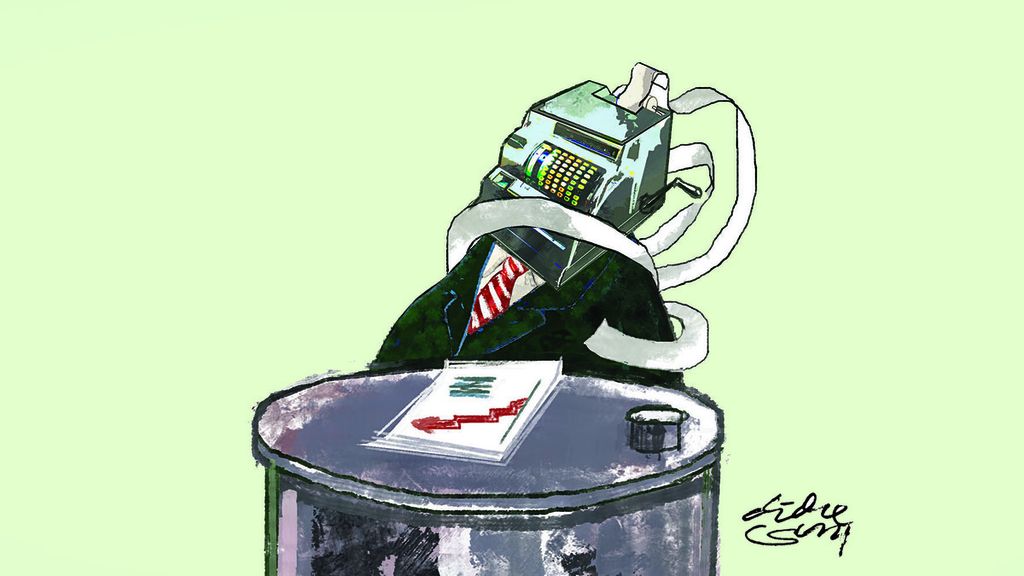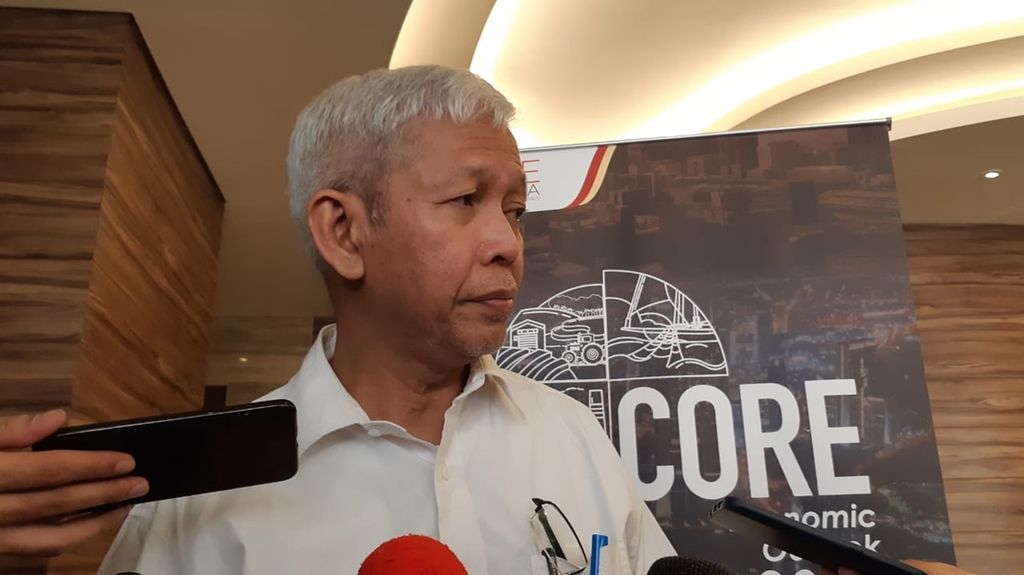Facing World Economic Turbulence
There are several implications of the world economic turmoil for the Indonesian economy. In line with the reduced fiscal and monetary stimulus, structural reforms should begin to show results as early as 2022.

In the last two years, there have been three major economic challenges faced by the world, including Indonesia: the surge in commodity prices, the aggressive normalization of the monetary policies of developed countries and the Russia-Ukraine conflict.
Apart from these three challenges, there are still risks that may arise from a potential new variant of COVID-19, which is unlikely to disappear before the end of 2022.
As to the increase in commodity prices, it was predicted. The recovery of the world economy in tandem with the easing of the COVID-19 pandemic has resulted in an increase in demand for commodities. Supply-chain disruptions due to social restrictions during COVID-19 have resulted in a shortage of production in meeting world demand. Since the beginning of 2021, commodity prices, both energy and non-energy, have been rising consistently.
In contrast to the previous commodity-price boom, which lasted for a long time (2004-2012), the current spike in commodity prices is potentially short-lived. China's economy, currently among the principle drivers of the world economy – responsible for about one percent of the world's total economic growth -- is unlikely to push for high growth, whether because of its focus on the treatment of COVID-19 and its spread, or because of the Evergrande property crisis.
Also read:
> Keeping Cautious in Economic Recovery Policies
> Recession During Pandemic and Economic Recovery
Thus, one of the fundamental factors influencing the price spike, namely the demand side, is not as strong as it used to be. With the recovery of the supply chain, commodity prices will decline again.
The outbreak of the Russo-Ukrainian war has caused a different problem. These two countries, which play a major role in the world's energy and food supply, are no longer able to contribute to meeting the increasing demand.
For the record, Russia's oil production in 2021 averaged about 9.8 million barrels per day or 10 percent of world crude oil consumption. As a result, the prices of food, energy and other mining commodities increased sharply.
The price spike in turn increased inflation, especially in developed countries. Inflation in the United States (US), which was previously 7.5 percent, increased to 8.5 percent in March 2022, the highest in 40 years. Inflation also soared in Europe and many other countries. Inflation in the European region jumped to 7.5 percent in March 2022.
Meanwhile, economic recovery and the decline in unemployment in developed countries, especially the US, have provided more room for normalization of the monetary policy. The unemployment rate in the US -- which fell to 3.6 percent in March 2022 (well below the 14.7 percent recorded when the US economy was first hit by COVID-19 in March 2020) -- and a fairly strong economic recovery in 2021, leave no reason to delay the normalization of the monetary policy in predicting and tackling inflation. In the first quarter of 2021 when US inflation picked up to 4 percent, the Fed predicted that the rise in inflation would be temporary -- it would decrease if the supply side recovered.
/https%3A%2F%2Fasset.kgnewsroom.com%2Fphoto%2Fpre%2F2021%2F01%2F13%2F20210113-Opini-6_Web_1610546763_jpg.jpg)
With the current increase in inflation, the assumption has changed. The Fed will take more aggressive steps to tame inflation by raising interest rates, although at the cost of decline in economic growth. The delay in adjusting monetary policy makes it more difficult for the Fed to tame inflation, which tends to become permanent later on.
How much will the US benchmark interest rate (Fed Funds Rate/FFR) increase? It is difficult to predict. What is certain is that the increase in FFR will be faster and higher than the previous normalization.
The current situation is very different from the previous normalization; the US inflation was only about 2 percent in 2013. It is possible that the FFR will increase to 3.5 percent by the end of 2022, more than the previous normalized level of 2.5 percent. .
The Fed raised the FFR to 5.25 percent in 2004-2006 in order to overcome inflation and the overheated economy.
Implications for Indonesia
There are several implications of the current world economic turmoil on the Indonesian economy. First, the increase in exports is quite high. As a country rich in natural resources, the trade balance also recorded a sizeable surplus.
Not surprisingly, the value of Indonesia's exports in 2021 increased to US$231.5 billion with a trade surplus of $35.3 billion. The exports continued to increase to $66.1 billion in the first quarter of 2022 with a trade surplus of $9.3 billion.
Also read:
> Equitable Economic Development Challenges
Even though it has a positive impact, the commodity boom can have unfavorable implications if it lasts for a long time. High commodity trade exchange rates can suppress the role of other sectors, especially industry. This Dutch disease phenomenon can hamper the industrialization program in Indonesia.
The second is the rise in inflation. With high commodity price increases, no country can completely isolate itself from the effects of increasing prices, especially energy. The Energy Information Administration's (EIA) latest projection, in early April 2022, estimates the price of Brent crude will average $98 per barrel in 2022, well above the 2022 State Budget (APBN) assumption.
/https%3A%2F%2Fasset.kgnewsroom.com%2Fphoto%2Fpre%2F2021%2F01%2F15%2F20210115-EKONOMI-BISNIS-9_web_1610721033_jpg.jpg)
Our fiscal capacity is quite limited in terms of providing additional subsidies to reduce potential inflation.
If high crude oil prices persist for a long time, domestic prices need to be adjusted gradually. Subsidies need to be controlled by providing social protection to the poor by diverting subsidies to goods for the targeted group.
Proportional adjustments also need to be considered to reduce migration from unsubsidized commodities to subsidized commodities.
Third is the tightening of monetary policy. Rising inflation and US benchmark interest rates will result in an increase in domestic benchmark interest rates. Interest rates need to be adjusted gradually and measurably while maintaining positive real interest rates above inflation expectations.
The aggressiveness of the increase in US interest rates needs to be considered in maintaining the rupiah exchange rate. As learned from experience in 2005, a delay in increasing interest rates can have a major impact on confidence in the rupiah. In this situation, the loss in confidence in the rupiah could jeopardize the stability of the economy as a whole.
In line with the reduced fiscal and monetary stimulus, structural reforms should begin to show results as early as 2022.
Fourth is fiscal normalization and strengthening structural reforms. With the budget deficit returning to a maximum of 3 percent of GDP by 2023, fiscal stimulus is becoming increasingly limited. Fiscal improvement implies three aspects: namely income, expenditure and deficit financing.
The hardest aspect to manage is spending, which is also the way to properly exit from the economic recovery program. This includes various relaxations and spending programs launched during the pandemic, which are no longer needed. Educating the public is very important, especially in relation to the strategic environment, which has changed drastically and rapidly.
In line with the reduced fiscal and monetary stimulus, structural reforms should begin to show results as early as 2022. Structural reforms will compensate for the decline in fiscal and monetary support in the last three years.

Bambang Prijambodo
Bambang Prijambodo, Senior Economist; Former Deputy for Economic Affairs, the National Development Planning Ministry/Bappenas
This article was translated by Hendarsyah Tarmizi.